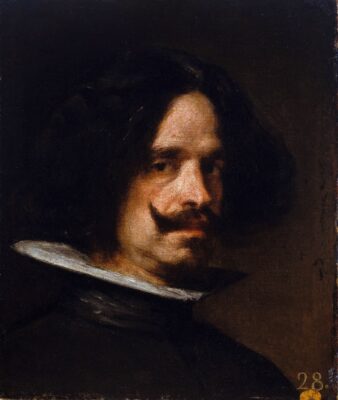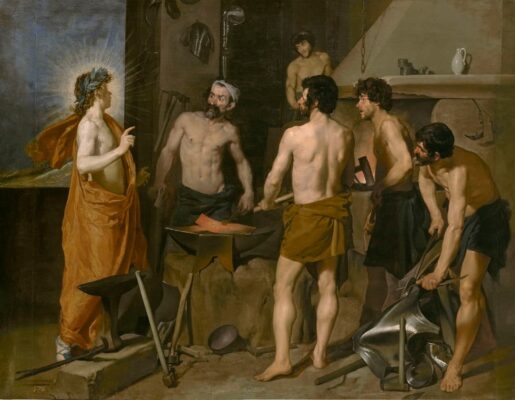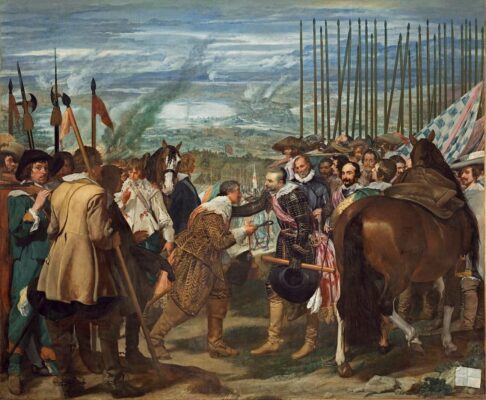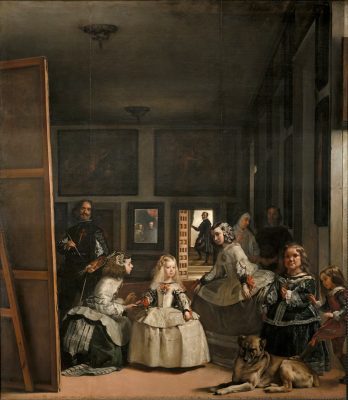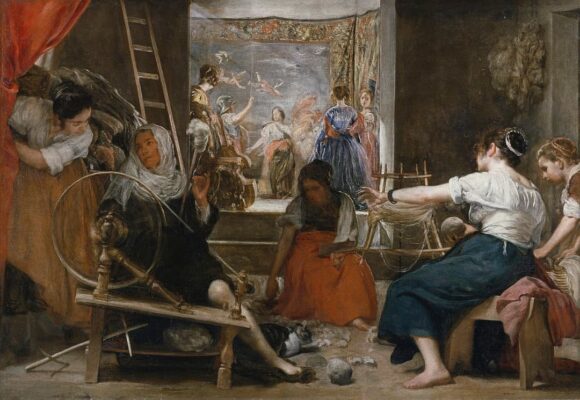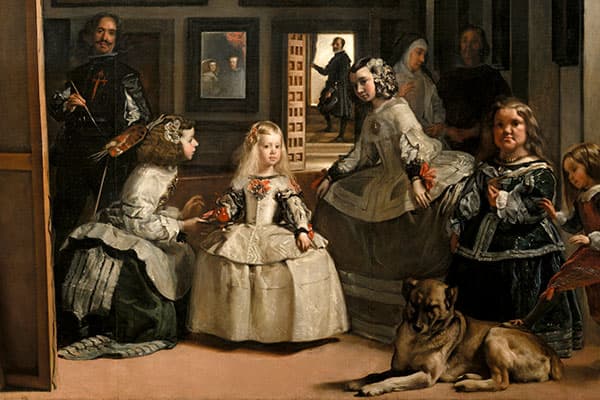Diego Velázquez
Teach me to write truth, painter of truth.
Spanish poet Blas de Otero, to Velázquez
The indisputable figure of the Golden Age of Spanish painting, the pinnacle of Baroque painting along with Rembrandt, and the “Painter of Painters” for Manet, Diego Velázquez is one of the most studied, admired and influential figures in the history of art.
Image: Diego Velázquez: “Self portrait”, c.1650. Oil on canvas, 45 x 38 cm. Museum of Fine Arts, Valencia
While the history of art is full of misunderstood artists, who struggled all their lives against the scorn and incomprehension of their contemporaries, Velázquez’s career is a continuous and well-deserved success story. Born in 1599 in Seville, he entered the prestigious workshop of Francisco Herrera the Elder when he was only ten years old, and passed the entrance exam for the painters’ guild in Seville when he was only seventeen. Before he was twenty, he had already painted remarkable works such as the “Old Woman frying eggs” in the National Gallery of Scotland. A few years later, Velázquez became court painter to the young King Philip IV.
His status as a court painter allowed him to get to know the work of great artists such as Titian and Tintoretto, as well as to establish contact with some of the most outstanding artistic personalities of the time, especially Peter Paul Rubens, who travelled to Spain in 1628. In addition, in 1629 Velázquez was able to travel to Rome, where he became acquainted with the work of the great masters, such as Michelangelo and Raphael. It was in the “eternal city” where he painted his first two great masterpieces, “Apollo in the Forge of Vulcan” (1630), now in the Prado Museum, and “Joseph’s Tunic” (1629-30, Monasterio de El Escorial). These two works “represent Velázquez’s full assimilation of Italian pictorial traditions, both classicist and Venetian” (Fernando Marías, “Velázquez”, 1993). Also in Rome he painted the two views of the garden of the Villa Medici, and his sensual “Venus in the Mirror“, now in the National Gallery in London.
Diego Velázquez: “Apollo in the Forge of Vulcan“, 1630. Oil on canvas, 318 x 276 cm. Madrid, Museo del Prado ·· Diego Velázquez: “The Surrender of Breda (or ‘The Lances’)”, 1634-35. Oil on canvas, 307 x 367 cm. Madrid, Museo del Prado
Upon his return to Madrid, Velázquez’s production focused mainly on portraits of Royalty. However, it was during this period that Velázquez painted one of his most famous masterpieces, “The Surrender of Breda” (known as “The Lances”), which Jan Morris called “the most Spanish of all pictures“, and which is preserved, like almost all masterpieces by Velázquez, in the Prado Museum.
In 1649, Velázquez made his second trip to Italy. He was received with all the honors destined for the king’s envoys, and he was made a member of the Academy of St. Luke and the Congregazione dei Virtuosi del Pantheon. In Rome, he painted his portrait of Innocent X, one of the most expressive portraits of Baroque painting, much admired by Francis Bacon more than 300 years later.
Velázquez returned to Madrid in 1651. In the remaining decade of his life, he produced several of his best known works: “Las Meninas” (1656-57), a masterpiece of Spanish painting and described by the painter Luca Giordano as “the theology of painting“, and the mysterious “The Fable of Arachne” (1657), known for a long time as “The Spinners“, a painting still not well understood and one of the very few non-real commissions fulfilled by the painter. About this painting, Julián Gállego points out that “its ‘proto-impressionism’ reaches bolder extremes than impressionism itself (…): it is enough to see how the spinning wheel of the old woman in the foreground turns at such a speed that the spokes of her wheel disappear and the hand that drives it is a simple circular stain; never, until the futurists (…) had movement been represented in such a bold and exact way” ( Julián Gállego, “Velázquez”, 1981). For his part, Carlos Areán affirmed that in these two works “the second Velázquez synthesis appears (…) which was primarily aimed at finding a new expressive arrangement of light and air, to achieve, in short, the first great Copernican turn in the evolution of Western painting” (Carlos Areán, “La pintura española: de Altamira al siglo XX”, 1971).
Diego Velázquez: “Las Meninas“, 1630. Oil on canvas, 223 x 290 cm. Madrid, Museo del Prado ·· Diego Velázquez: “The Fable of Arachne (or ‘Las Hilanderas’)”, 1657. Oil on canvas, 220 x 280cm.
Velázquez died in Madrid in 1660. His figure, much celebrated in Spain, did not achieve great recognition in Europe until the mid-nineteenth century, being later greatly admired by modern painters, from Manet to Picasso.
G. Fernández · theartwolf.com
Masterworks by Diego Velázquez
Follow us on:

